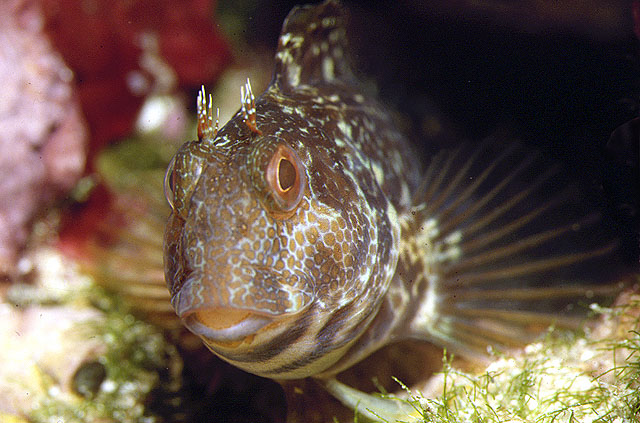| Blenniidae (Combtooth blennies), subfamily: Salariinae |
| 12.7 cm SL (male/unsexed) |
|
demersal; marine; depth range 0 - 25 m |
| Eastern Atlantic: Spain and Portugal to Möwe Bay, Namibia. Also in the Mediterranean along the coast from Morocco, Algeria, Spain. Southwest Atlantic: Brazil and Patagonia, Argentina (Ref. 4404). Western Indian Ocean: Natal to Knysna in South Africa. |
|
Dorsal spines (total): 11-12; Dorsal soft rays (total): 18-24; Anal spines: 2-2; Anal soft rays: 20-25. Body with up to 9 dusky bands above and dark spots below; sometimes pale with irregular dusky marks; 2 dark bands on underside of head; pectorals pale to dusky pale in color; dorsal fin dusky or with many spots (Ref. 4404). |
| Adults occur in rocky shores, often at steep walls of surf-exposed sites (Ref. 5981). Oviparous. Eggs are demersal and adhesive (Ref. 205), and are attached to the substrate via a filamentous, adhesive pad or pedestal (Ref. 94114). Larvae are planktonic, often found in shallow, coastal waters (Ref. 94114). |
|
Least Concern (LC); Date assessed: 27 March 2009 Ref. (130435)
|
| harmless |
Source and more info: www.fishbase.org. For personal, classroom, and other internal use only. Not for publication.
